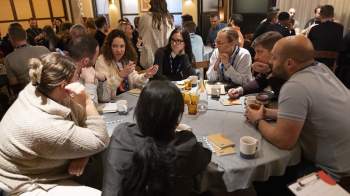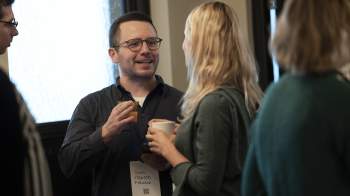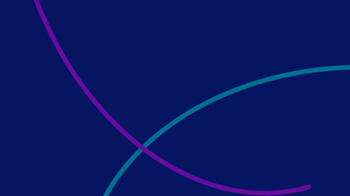ISBA/PwC: Update on stage two of the Programmatic Supply Chain Transparency study
Posted on Wednesday 01 June 2022 | IAB UK
ISBA’s Clare O’Brien and PwC’s Sam Tomlinson updated IAB members on what to expect from stage two of ISBA/PwC’s Programmatic Supply Chain Transparency study
Two years on from the launch of the Programmatic Supply Chain Transparency study, Clare O’Brien, Head of Media, Effectiveness and Performance at ISBA, and Sam Tomlinson, Partner at PwC, joined IAB UK to update our members on their plans for stage two of the study. As our Chief Digital Officer Tim Elkington explained at the start of the webinar, the original study set out to track an impression’s journey through the programmatic supply chain from end to end.
The results prompted the creation of a cross-industry taskforce to create more consistency and transparency within the supply chain. Significant outputs include a set of tools to enable advertisers and publishers to achieve financial audit transparency - you can download these here.
Here’s a recap of what we learnt at the webinar:
What is the aim of phase two of the study?
The aim is to assess whether transparency within the programmatic supply chain has improved as a result of the outputs from the taskforce - solely focused on financial audits. O’Brien explained that phase two will replicate the original study as closely as possible in order to compare and chart progress, describing it as “a controlled test and learn”. She added that the aim is to “validate all of the work that IAB, AOP, ISBA and IPA members have done“ to improve transparency in the programmatic supply chain.
Tomlinson ran through the five key questions that phase two seeks to answer:
- Does the Audit Permission Letter (which forms part of the toolkit) accelerate data access?
- Do the agreed data fields improve data quality?
- Does improved data quality lead to improved impression match rates?
- Is the unknown delta reduced?
- Are there clear actionable next steps for brands? (and for agencies, tech vendors and publishers?)
Who has commissioned it?
As with the original study, phase two has been commissioned by ISBA with backing from its members. O’Brien explained that advertisers are “hugely invested in the online ad community and want to continue to invest in and invest more” as it’s proving to be a fruitful advertising channel. “It’s absolutely vital that advertisers understand how [the supply chain] operates, first and foremost at a financial level”.
What do ISBA/PwC expect the results of phase two to be?
Both Tomlinson and O’Brien are optimistic that there will be improvements to report. As Tomlinson said: “I think the question will be how much better are we, rather than are we better at all.” He expects the answers to the first four questions listed above to be affirmative. They stressed that the study is being conducted to inform the taskforce’s next steps and where more support is necessary. The taskforce will review how to share the results once the study's completed.
Who’s taking part?
PwC and ISBA are still in the process of finalising those that are taking part. Tomlinson noted that tech vendors can only get involved when they have advertiser and publisher partners that are taking part.
What is the timeline?
A full breakdown of timings is available on the presentation slides, but PwC’s aim is to collect data for June and July, analyse it in August and report on it in September. They are still in the process of chasing a third of advertisers and publishers to sign up and are conscious that they won’t have signed audit permission letters by the 1 June for all participants. PwC is therefore asking that tech vendors retain the data needed for a financial audit for a little longer than the usual two weeks. When asked why the study can’t be pushed back to allow more time, Tomlinson explained that some of the brands taking part have no spend planned for August.
What form will the report take?
The second phase of the report will be shorter and less detailed than phase one. An aggregate report will be produced to share with participants in the study and members of the Cross-Industry Programmatic Taskforce. Advertisers will receive a bespoke version that shows where they sit compared to the averages the report gives.
What channels will be audited as part of the report?
Display and video will be audited.
What resource will be required from DSPs/SSPs?
For DSPs, resource demands will be light, Tomlinson said. For SSPs it’s a bit more complicated as data is “usually organised by publisher so will need to filter it by advertiser”. This won’t require resource from the SSP - unless there are matching issues in which case PwC will need support from the SSP to match the data.
What scale is the study?
The minimum threshold for advertisers to be involved is a monthly spend of £10,000 on programmatic advertising monthly for June and July 2022.
Related content
ISBA launches updated Media Services Framework
Learn moreUpdates to the Programmatic Financial Audit Toolkit released
Learn moreToolkit proven to help deliver programmatic transparency
Learn moreDigital’s share grows to 74% of UK advertising spend
Learn more
Fast forward to 2030 with Futurescape
An in-depth exploration of the attitudes, innovations and media shifts that will shape the years ahead and redefine how we advertise by the turn of the decade



